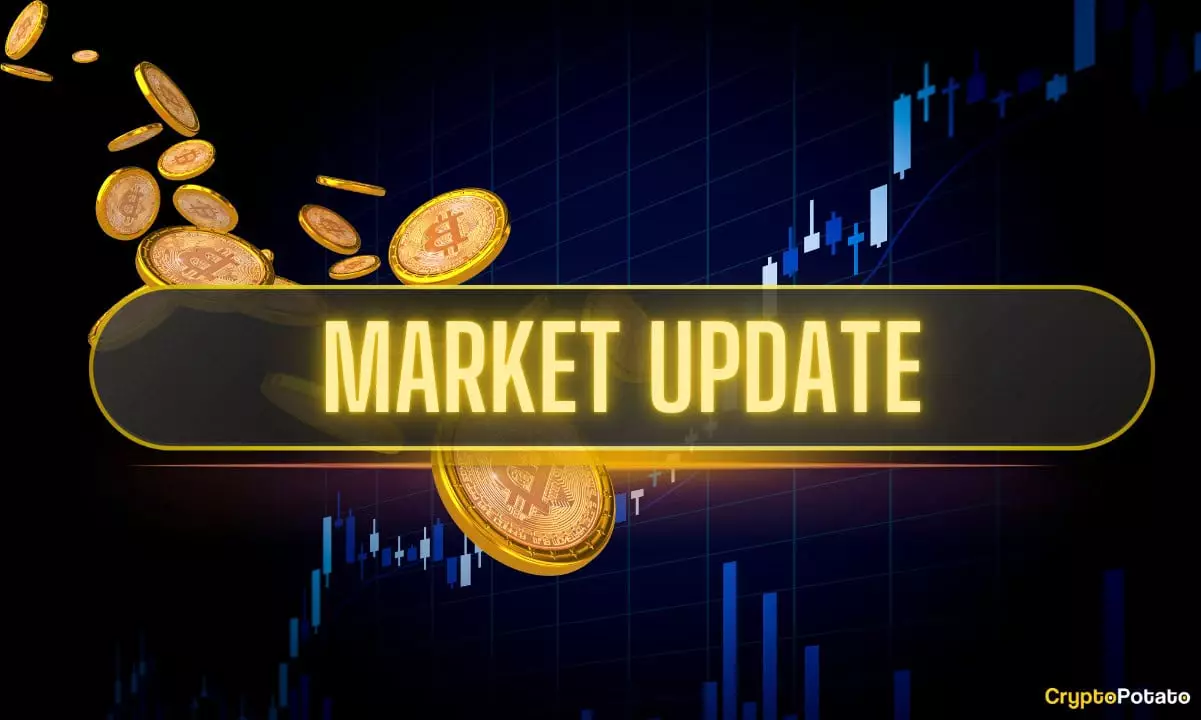The recent surge in volatility within the cryptocurrency markets can largely be attributed to the unfolding drama of trade wars spearheaded by none other than former President Donald Trump. The air of uncertainty has not only cast a shadow over crypto assets but has also ignited debates among investors, analysts, and crypto enthusiasts. Trump’s controversial decision to impose tariffs, including a staggering 125% on imports from China, has induced a frenzy reminiscent of stock market swings, leaving Bitcoin enthusiasts on an emotional rollercoaster. The volatility we’ve seen over the past week is not merely incidental; it’s a catastrophic amalgamation of economic policies and market reactions that have guided Bitcoin down to a five-month low, only to be met with short-lived rallies.
The Bitcoin Tug-of-War: Fickle Fluctuations
Critics of the Trump administration’s trade policies are right to argue that such unpredictable tariffs do more harm than good. Bitcoin’s rapid price fluctuations—from a lackluster $82,000 to breaking the despair line at $74,000—underscore a marketplace that is highly susceptible to external factors like governmental decisions. Ultimately, despite fluctuating back to around $82,000, the path to recovery for Bitcoin seems questionable when such erratic policies are at play. Bitcoin didn’t just lose its firm footing; it experienced a brutal backlash that felt like a slap in the face to its long-term holders.
In stark contrast, Ethereum and other major cryptocurrencies faced even graver challenges. Ethereum’s plight of plummeting to $1,400 represents a staggering 77% decline against Bitcoin from 2021 peaks. In this light, one must raise the question: Are we witnessing the slow demise of the altcoin market at the hands of Bitcoin’s supremacy, or is it simply a matter of the tides changing?
The Market Reaction: A Financial Game of Chess
As President Trump paused tariffs against most countries while dialing up the heat on China, Bitcoin experienced a brief surge—from just under $77,000 to over $83,000 in a matter of hours. This is a testament to the crypto market’s instinctive reaction to news, both good and bad. Yet the narrative here goes beyond mere market mechanics; it challenges our perception of Bitcoin as a stable investment. The asset remains highly sensitive to geopolitical changes, revealing that its perceived stability is more illusion than reality.
Analysts are quick to point out that such volatility is not just hysteria; it’s an amplified signal of investor sentiment. Bitcoin’s dominance in the cryptocurrency realm at around 60.6% raises concerns about market concentration. A robust ecosystem must emerge to ensure that Bitcoin isn’t the only titleholder to the crown as the premier digital asset. It calls for increased diversification across cryptocurrencies, something that proves crucial for long-term growth and sustainability.
Hope amidst the Turmoil: Predictions and Possibilities
Despite the tumult, there are whispers of hope from the crypto forefront. Charles Hoskinson’s bold prediction of Bitcoin potentially reaching $250,000 by the end of 2025 serves as an optimistic beacon amid the chaos. Is this mere pie-in-the-sky thinking, or is Hoskinson onto something? In an increasingly digitized economy, Bitcoin’s promise holds potential, yet the future may address regulatory and economic catalysts that will either uplift the currency or drag it down.
Moreover, Bitcoin’s resilience is evident in how long-term holders have been on a buying spree post-Tariff controversy. It showcases the unwavering belief in its foundational ideology, contrasting sharply against short-lived panic selling. These actions illuminate not just the raw determination of the Bitcoin investor base but also a collective understanding that crypto assets will not only survive but have the potential to thrive in an ecosystem rife with uncertainty.
Ripple and the SEC: A Saga Unfolding
While Bitcoin struggles with external pressures, the unpredictable tale of Ripple and its ongoing legal battle with the SEC looms large. As speculation grows about the possibility of a settlement, the ramifications may extend beyond Ripple’s immediate value. The entire regulatory landscape for cryptocurrencies could shift dramatically, recalibrating how assets are evaluated and traded. The suspense around Ripple amplifies the sense that the market is still evolving, often in directions completely unforeseen.
As we look ahead, one can’t help but feel trapped in a complex web defined by regulations, market behaviors, and unpredictable external influences. Perhaps we are not just observing a market but are part of a larger narrative about disruption within traditional economic structures. Cryptocurrency’s future now hangs in a delicate balance, influenced by the actions not only of investors and corporations but also of politicians wielding tariffs like weapons in a global economic battlefield.















Leave a Reply